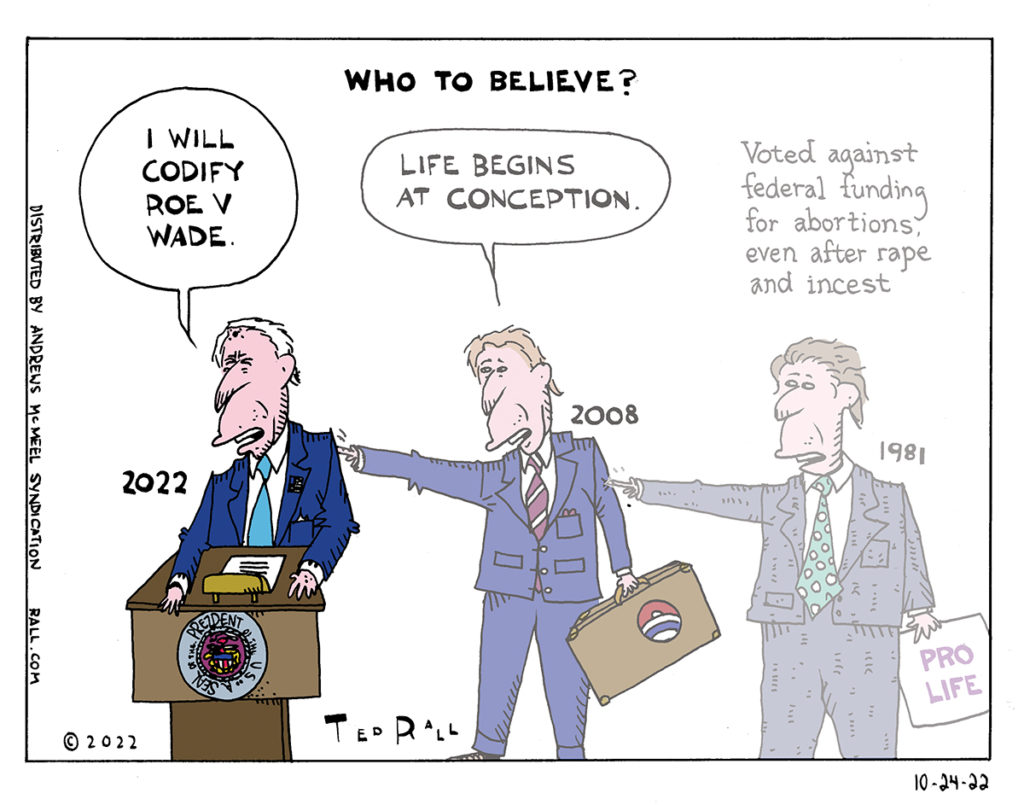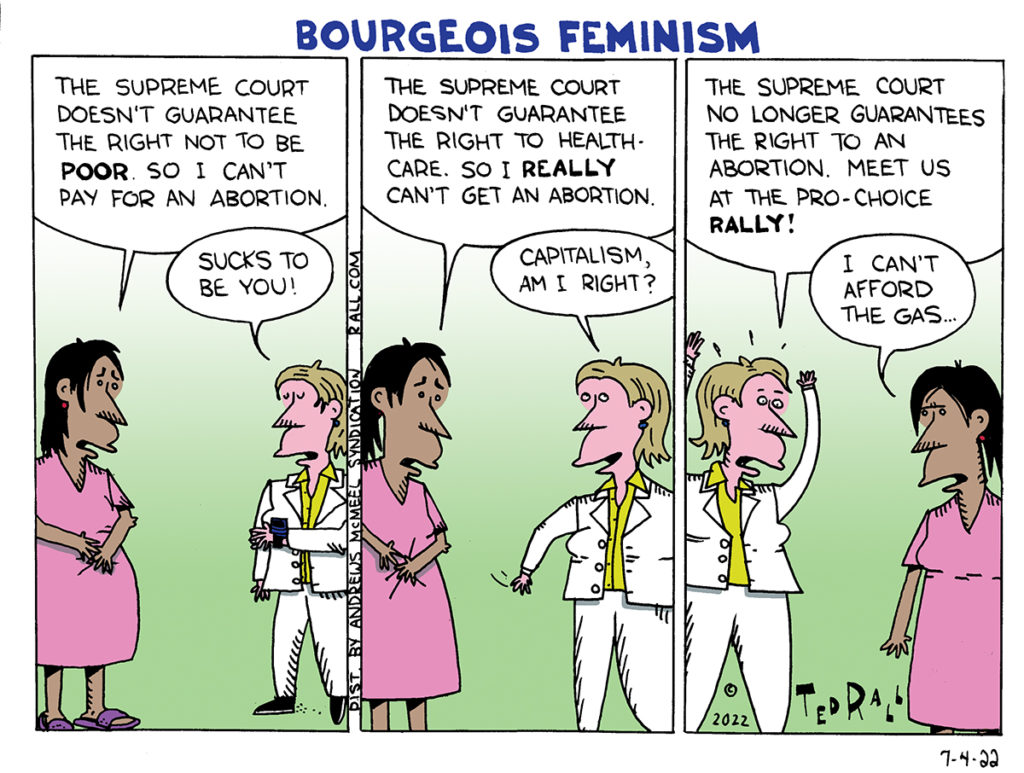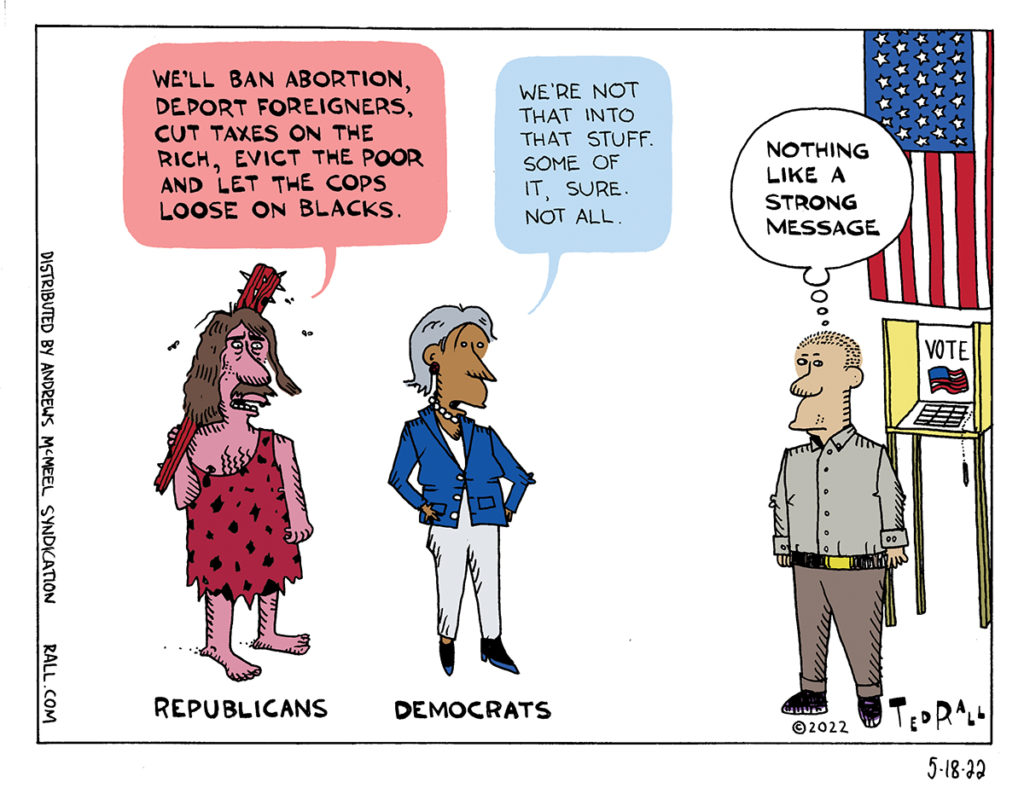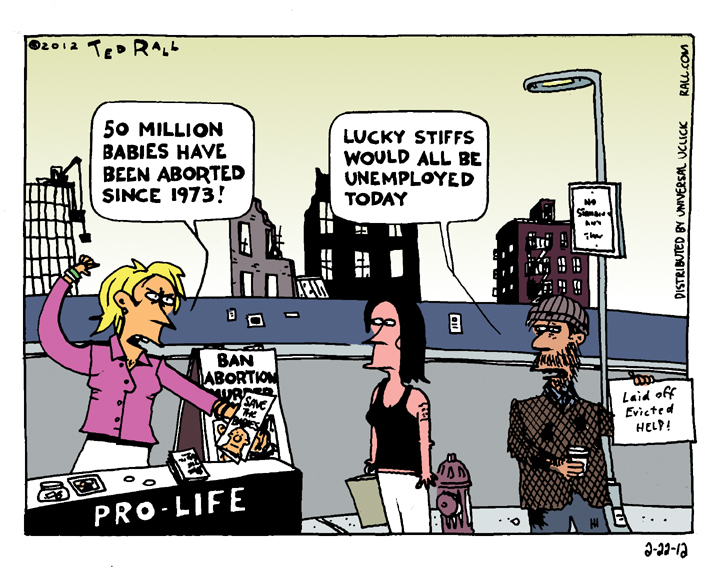Why Are Women Falling Behind?

Why do women keep getting pushed to the back of the line?
The sociological history of the United States has been defined by struggles for equality with the landed white males, presenting as straight, who founded the republic. Though it’s still a continuing effort, the abolitionist movement and the fight for racial civil rights scored the first major triumph, emancipation in the mid-19th century.
Gender equality and feminism achieved the second big win with the ratification of women’s suffrage in 1920. Since then, however, equal rights for women have frequently taken a back seat to other liberation struggles that got off the ground later. The Equal Rights Amendment was never ratified, putting the United States among the tiny minority of nations that do not specifically guarantee equality between men and women in their constitutions. The Dobbs decision made the U.S. one of just three countries in the world to have rolled back the federally-guaranteed right to an abortion since 1994.
The worrisome stalling of women’s progress is highlighted by the bipartisan passage in the Senate of a bill that will codify same-sex marriage at the federal level. The bill is now headed to certain passage by the Democratic-controlled House and will be signed into law by President Biden.
In this era of extreme polarization, it’s newsworthy that 12 Republicans crossed the aisle to vote alongside Democrats. What’s really interesting is that the Respect for Marriage Act addresses a theoretical threat to liberty over one that is extant. In the Dobbs opinion, Justice Clarence Thomas argued that the Supreme Court’s newfound skepticism of a constitutional privacy right undermines the case law used to legalize contraception and same-sex marriage, and invited petitioners to bring test cases to the high court. But there was no indication gay marriage was on the judicial chopping block. Nor did the incoming Republican House leadership signal it wanted a ban—not that one would have survived the Senate or a presidential veto. This was a “just in case” move.
Abortion rights, on the other hand, were actually eviscerated by Dobbs. Half the states, comprising most of the area of the country and nearly half its population, ban abortion. Only 15 states allow the procedure without restrictions. Yet there is no possibility that the incoming Republican House will consider codifying Roe v. Wade at the national level. Even Democrats, packing their bags, offered only tepid lip service. As with the ERA, women will have to wait.
As seen with the progress on same-sex marriage, the movement for LGBTQ equality keeps moving forward—and at an impressive rate.
It’s harder to identify a discrete official start of the transgender rights movement, but media and political consciousness began to focus on the T in LGBT in the 1970s and 1980s. There still isn’t a federal law designating transgender as a protected class but the Supreme Court’s 2020 Bostock decision prohibits employment discrimination against transgender people. By way of comparison, it remains legal to fire someone because they are too young, specifically under age 40.
Stonewall augured the rise of the gay rights movement 121 years after the Women’s Rights Convention in Seneca Falls, New York did the same for women. Why does the women’s struggle, which got off the ground so much sooner, seem to have stalled, or even lost ground compared to more recent movements?
Barbara Jordan, the trailblazing congresswoman from Texas who won national attention during the Watergate hearings, said that she found it even more challenging to be a female politician than a Black one. In a country built on slavery and cursed by racism still embodied by racist policing every single day in every single town, that’s saying a lot.
Yet evidence that women are stuck is everywhere to see. Looking ahead to the 2024 presidential campaign, the growing buzz around Transportation Secretary Pete Buttigieg, coupled with the poor approval ratings for Vice President Kamala Harris, raises the possibility that we might see a gay man become president before a woman—and remember, it’s been 36 years since Geraldine Ferraro became the first woman on a major party presidential ticket. Progress in closing the pay gap between men and women has stalled at 84%, with no sign of improvement in sight.
It is ironic that women, who comprise the biggest demographic of any of the traditionally oppressed minorities in the United States, are having such a hard time compared to smaller groups who got started later.
Hell, women aren’t even a minority at all.
(Ted Rall (Twitter: @tedrall), the political cartoonist, columnist and graphic novelist, co-hosts the left-vs-right DMZ America podcast with fellow cartoonist Scott Stantis. You can support Ted’s hard-hitting political cartoons and columns and see his work first by sponsoring his work on Patreon.)
Lies Begin at Political Conception
Which Joe Biden should voters believe? The one who, for many years, was a pro-lifer who was so extreme that he voted against federal funding for abortions even in the case of rape, incest and the life of the mother? Or the current one who says he would codify Roe v. Wade if he got the chance — which, of course, Obama chose not to do while Biden was vice president.
Want Abortion Back? First, Women Have to Die.

The Supreme Court has sent a message: we’re no longer in the business of ratifying social change. No more legislating from the bench. If Americans want abortion, same-sex marriage and contraception legalized as opposed to merely tolerated, they should look to Congress.
Distraught over the overturning of Roe v. Wade, many women are searching for a quick fix—and they’re right. A 20,000-abortion-per-week nation can’t go to 10,000 overnight without dire social, economic and medical consequences. But the system won’t give us the rapid remedy we need.
Women will have to die. They’ll have to die in ugly ways. Their deaths will have to be public.
Congress won’t help. Bless her heart, Elizabeth Warren articulated the Democrats’ plan, which is magical thinking at its finest: “If we pick up two more senators [in November], we can ditch the filibuster and make Roe the law of the land.” Odds of Democrats losing seats and Senate control are solid; odds that they’ll gain two or more seats are slim to none.
Neither will the Supreme Court. Only one justice, Clarence Thomas, is likely to die in the next year or two. He’s 74, overweight and rumored to be in poor health. Even if Mitch McConnell allowed Biden to hold a vote and the president were to replace Thomas with a liberal, the conservative majority would remain 5-to-4. Adding new (liberal) justices to the Supreme Court is a pipe dream that would require a 60-vote Democratic supermajority, not to mention changing Biden’s mind about packing the court.
We the people won’t act either. Now that Roe is no more, look at what has happened in the streets: Nothing, unless you count a few sporadic, easily-ignored, low-attendance protest demonstrations. Pro-choice groups like NARAL are still fundraising, not mass-mobilizing.
Want abortion back? Women are going to have to die hard, ugly, public deaths.
A 2021 study estimates that 140 additional women will die each year in the U.S. due to complications from pregnancies that otherwise would have been terminated in abortions.
Vaguely- and carelessly-written statutes allowing for abortions in case of medical emergencies will kill even more. Women with heart conditions and diabetes are at higher risk of death during childbirth, but what level of risk rises to an emergency? Who makes the call, a doctor or a judge? How many doctors will take the safest course—for themselves—and refuse to perform a needed abortion? Some abortion bans are so sweeping that the procedure isn’t permitted even in case of a miscarriage, which can lead to fatal sepsis unless the fetus is removed.
“What does the risk of death have to be, and how imminent must it be?” University of Michigan reproductive health professor Lisa Harris asked in The New England Journal of Medicine. “Might abortion be permissible in a patient with pulmonary hypertension, for whom we cite a 30-to-50% chance of dying with ongoing pregnancy? Or must it be 100%?” Doctors in states where abortion is now illegal will probably “wait to that very last minute when it’s clear that a patient will die to do the procedure, and that’s just not an ideal time to do any kind of intervention.”
Pathetic and absurd and wrong, yet plainly true, is that the quickest and likeliest route toward codifying abortion rights into federal law will begin with one, or more likely several, highly-publicized cases of women who suffer hideous deaths because Roe is no more. If enough of those tragedies go viral on social media, there may eventually be enough horror and outrage across the political spectrum to persuade some Republicans to join Democrats into passing an abortion-rights law.
This, of course, is no guarantee. Many thousands of innocents have been slaughtered in mass shootings, all caught in gruesome high-definition video and spread via social media, yet Congress has barely begun to act on gun control measures. Cops routinely murder Black men on video yet the police remain woefully un-defunded. Women’s deaths may be like that, piling up with nary a “thought and prayer” for a generation or more until the United States rejoins the developed world and restores Roe.
Without the Supreme Court, a functional Congress or sustained, energetic grassroots activism, however, outrage prompted by social media and high-profile martyrs are all we can hope for under this current system.
(Ted Rall (Twitter: @tedrall), the political cartoonist, columnist and graphic novelist, is the author of a new graphic novel about a journalist gone bad, “The Stringer.” Order one today. You can support Ted’s hard-hitting political cartoons and columns and see his work first by sponsoring his work on Patreon.)
DMZ America Podcast #54: Roe v Wade Killed, Guns, Ukraine and Male Masturbation
The DMZ America podcast falls off of the rails hard, but first Ted and Scott discuss the SCOTUS decision to throw abortion back to the states. Earlier the court struck down a New York gun law. Then the boys discuss Ukraine and living the narrative vs reality. Finally, the conversation inexplicably turns to masturbation and involuntarily celibates aka Incels.
Nothing like a Strong Message for the Midterms
Voters will be going to the polls for the midterm elections six months from now. Democratic politicians know that they face an uphill climb and are likely to lose both the House of Representatives and the Senate. Yet the party hasn’t managed to coalesce behind a clear message beyond not being Republicans.




